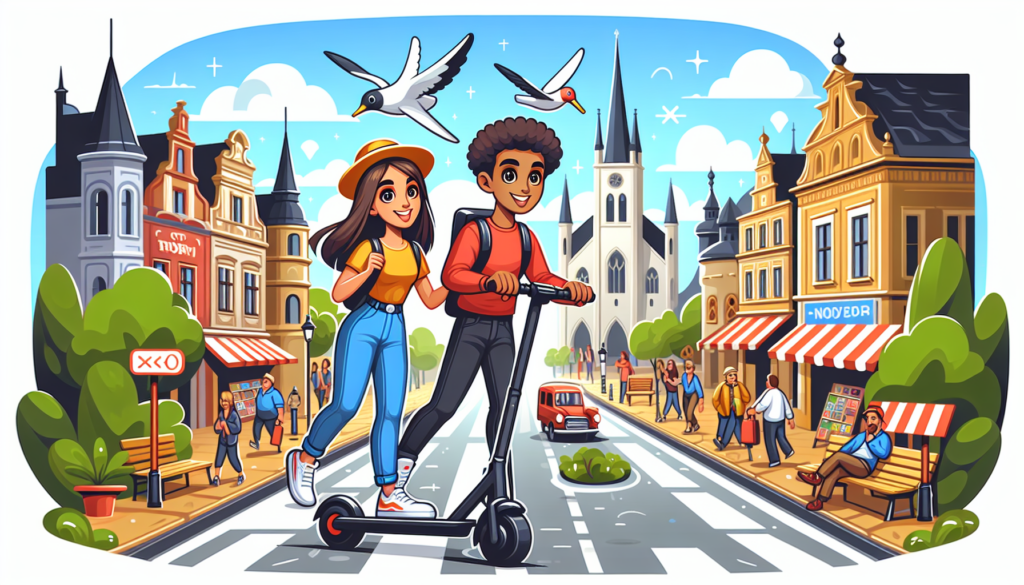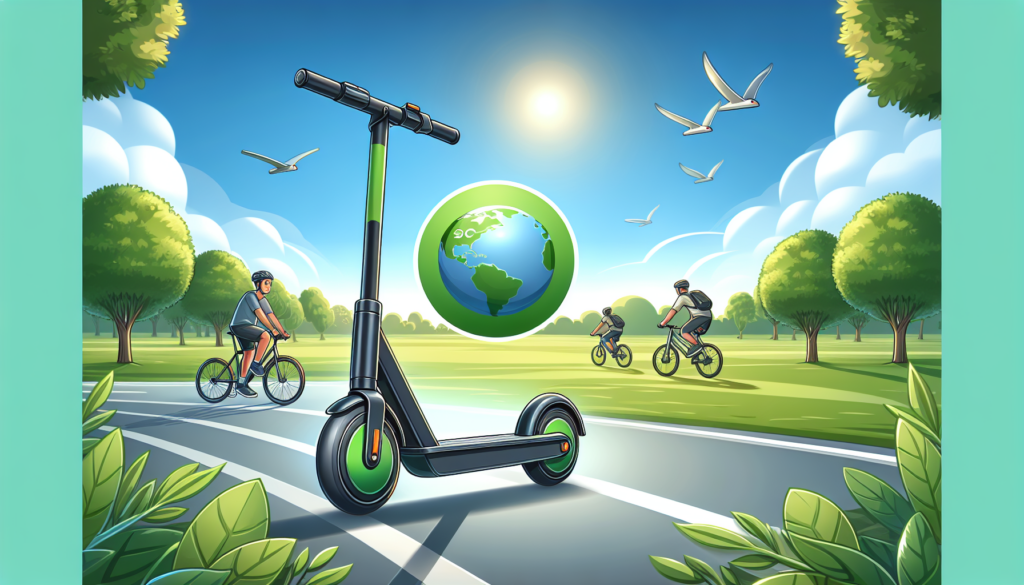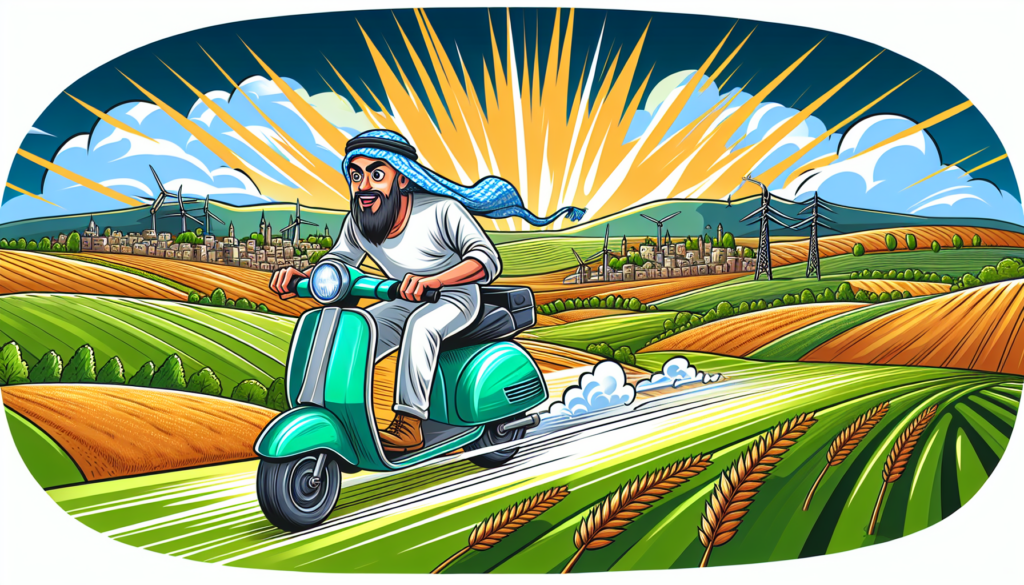
Electric scooters have rapidly gained popularity as a sustainable mode of transportation, primarily within urban landscapes. However, their versatility extends far beyond city streets, catering to a diverse range of unique use cases. From mountain trails and parks to rural commutes and outdoor events, electric scooters offer practical solutions for various environments and demographics. Their adoption not only alleviates traffic congestion but also promotes a greener, eco-friendly lifestyle—making them an invaluable asset for individuals seeking efficient mobility options. Let’s delve into the myriad of settings where e-scooters shine and how they can enrich the lives of users in unexpected ways.
Unique Use Cases for Electric Scooters
Electric scooters have garnered a reputation primarily as a convenient mode of transportation in urban settings, but their applications extend far beyond city streets. For instance, rural delivery services have begun utilizing e-scooters to efficiently transport goods across expansive agricultural lands, reducing transportation costs and promoting sustainability. Additionally, many outdoor enthusiasts are adopting e-scooters for exploring scenic trails and parks, offering a fun and eco-friendly way to engage with nature. These unique use cases highlight the electric scooter’s versatility, serving not only individuals but also businesses seeking innovative solutions for logistics and transportation in less conventional environments.
Moreover, e-scooters can substantially impact traffic congestion and environmental sustainability, particularly in areas where public transportation is scarce. For instance, they are proving beneficial in suburban and semi-urban areas, where traditional public transit may not be as accessible. By providing an alternative to cars for short-distance travel, electric scooters can help reduce emissions and reliance on fossil fuels. This aspect is particularly critical as communities worldwide strive for greener solutions, allowing them to reduce their carbon footprints while enhancing mobility options for residents. As more individuals embrace e-scooters in varied contexts, the potential for improved urban planning and environmental impact becomes increasingly evident.
Rural Areas: Expanding the Reach of Electric Scooters
Electric scooters are revolutionizing transportation beyond the bustling city streets, with a notable impact in rural areas. In these communities, e-scooters serve as a practical solution for short trips, connecting residents to essential services such as grocery stores, schools, and healthcare facilities. The lightweight and compact nature of e-scooters allows users to navigate through winding country roads and scenic trails, offering a unique blend of convenience and adventure. Additionally, farmers and agricultural workers can utilize e-scooters for tasks like farm inspections or transporting tools across expansive fields, showcasing their versatility in diverse settings.
The adoption of electric scooters in rural regions also holds significant implications for traffic and environmental sustainability. By providing an alternative to traditional vehicles, e-scooters help reduce carbon emissions and alleviate traffic congestion, which can be particularly challenging in areas with limited public transport options. This environmentally friendly mode of transportation not only enhances mobility but also promotes physical health, as riding an e-scooters encourages outdoor activity. Overall, the integration of e-scooters into rural life exemplifies how they can help bridge the gap between accessibility and sustainability, making them a vital tool for enhancing community connectivity and preserving the environment.
Electric Scooters in Tourist Destinations
Electric scooters are rapidly becoming a popular mode of transportation beyond city streets, especially in tourist destinations. Travelers have discovered the convenience of e-scooters for exploring iconic landmarks and scenic locales without the hassle of traditional transport options like buses or taxis. Many cities around the world, from picturesque coastal towns to historic villages, have embraced this eco-friendly vehicle to enhance the tourism experience. This unique use case allows tourists to navigate at their own pace, easily accessing attractions, shops, and eateries while taking in the sights and sounds of their surroundings. The presence of electric scooters in tourist destinations not only boosts mobility but also has a positive impact on traffic and the environment.
By opting for electric scooters, tourists contribute to reducing congestion and minimizing carbon emissions, making the exploration more sustainable. Additionally, this flexible transportation option can help local businesses flourish as visitors can reach outlying areas that were previously hard to access. As tourism adapts to more sustainable practices, electric scooters stand out as a versatile solution that enhances the overall experience for travelers while fostering a greener way to enjoy beautiful destinations.
Campus Commuting: The Role of Electric Scooters in Education
Electric scooters are rapidly becoming a popular mode of transportation on college campuses, providing an efficient and eco-friendly solution for students navigating between classes and dormitories. With campuses often sprawling across large areas, electric scooters facilitate quick and convenient travel, allowing students to save time and energy while avoiding heavy foot traffic. They’re particularly beneficial for students carrying heavy backpacks or equipment for their studies, making a commute between various facilities, such as libraries and laboratories, significantly easier. Furthermore, as awareness of the environmental impact of traditional transportation grows, the adoption of electric scooters contributes to a more sustainable campus culture, reducing the carbon footprint and alleviating traffic congestion at peak hours.
Beyond educational institutions, electric scooters can also enhance off-campus living by enabling students to easily explore surrounding neighborhoods, run errands, and unwind after a day of studies. They serve as a bridge connecting students to local amenities, such as grocery stores, cafes, and recreational areas. This broadens their mobility while fostering a sense of community by encouraging exploration and interaction with the environment. By promoting a healthier and more sustainable way of getting around, electric scooters are carving out a significant role within the academic landscape, demonstrating their versatility beyond just urban commuting.

Impact of Electric Scooters on Traffic Congestion
Electric scooters have emerged as a transformative solution to tackle traffic congestion, not only in bustling urban areas but also in various unique settings. As more people adopt electric scooters for their daily commutes, they contribute significantly to reducing the number of cars on the road. This shift in transportation choice alleviates traffic bottlenecks and creates a smoother flow of vehicles. Additionally, electric scooters can be effectively utilized in suburban and rural locations where users might previously have relied on personal vehicles for short trips, further minimizing congestion issues.
Moreover, the environmental impact of integrating electric scooters into various transport networks is noteworthy. By decreasing reliance on fossil fuel-powered vehicles, electric scooters help lower greenhouse gas emissions, contributing positively to air quality and environmental sustainability. They not only provide an efficient transport alternative but also encourage a culture of eco-friendliness among users. As awareness grows regarding their benefits, electric scooters are likely to play an increasingly pivotal role in urban planning and traffic management strategies, benefitting both individuals and communities alike.
Environmental Benefits of Using Electric Scooters
Electric scooters offer notable environmental benefits that extend beyond their use in urban settings. By opting for electric scooters over traditional vehicles, users can significantly reduce their carbon footprint. These eco-friendly modes of transportation produce zero tailpipe emissions, which greatly contributes to cleaner air quality in cities and communities. Their efficient energy consumption means that fewer fossil fuels are burned compared to cars, leading to a decrease in greenhouse gas emissions. This shift to electric scooters can also alleviate traffic congestion, as they occupy less space on the road and promote alternative mobility solutions, helping to foster more sustainable urban and suburban environments.
Moreover, electric scooters have applications that go far beyond commuting in city landscapes. They can serve as a practical solution for individuals in rural areas who need efficient transport options to reach grocery stores, schools, or healthcare facilities. In addition, these scooters can be integrated into recreational activities, offering people a fun way to explore parks and nature trails while minimizing environmental impact. By broadening the use cases for e-scooters, we can create a more interconnected society that prioritizes sustainability and encourages eco-conscious living, providing individuals with the tools they need to lead greener lifestyles.
Enhancing Mobility for Seniors and Persons with Disabilities
Electric scooters are proving to be a game-changer for seniors and persons with disabilities, providing them with enhanced mobility that goes beyond the conventional urban landscape. These electric scooters offer a unique solution for independent travel, allowing users to navigate their environment with ease and confidence. Whether it’s getting around in suburban neighborhoods, accessing community centers, or enjoying leisurely rides in parks, the versatility of electric scooters enables users to maintain their social connections and improve their quality of life. It’s more than just a mode of transport; it’s a vehicle for empowerment, fostering independence for those who may have previously felt limited by physical challenges.
Moreover, electric scooters can significantly impact traffic and environmental concerns, especially in areas where traditional transport options might not be as accessible. By providing a sustainable alternative for local travel, electric scooters can reduce reliance on cars, thereby lowering traffic congestion and emissions. This shift not only helps to create a cleaner environment but also makes communities more welcoming and inclusive. The ability for seniors and persons with disabilities to engage more freely in their surroundings reflects a society leaning towards inclusivity, making mobility a possibility for everyone, regardless of age or ability.
The Future of Transportation: Electric Scooters in Suburban and Rural Communities
Electric scooters, commonly associated with bustling urban environments, are finding a unique niche in suburban and rural communities. Residents in these areas are adopting electric scooters for various purposes, including short commutes to work, leisurely rides through local parks, and quick errands to the grocery store. With wider streets and open spaces, suburban zones provide an ideal backdrop for utilizing electric scooters, fostering a greener mode of transportation. Instead of relying solely on cars, individuals are increasingly turning to scooters as a practical solution, reducing traffic congestion and contributing positively to the local environment by minimizing carbon footprints.
Moreover, electric scooters have proven to be a great boon for rural residents, particularly where public transport options are limited. Farmers and agribusiness owners are using electric scooters to traverse extensive farmland, often in combination with traditional vehicles, thus cutting down fuel costs and promoting sustainability. These scooters can also serve as an affordable transport solution for remote workers or students needing to reach bus stops or community centers. The future of transportation hinges on these adaptable vehicles, which hold the potential to reshape how we navigate both suburban and rural landscapes, encouraging eco-friendly practices while meeting the diverse needs of every community.

Embracing the Versatility of Electric Scooters
E-scooters are proving to be far more than just a trendy mode of transport for urban dwellers. Their unique uses extend to various environments including rural areas, parks, and campuses, offering innovative solutions for diverse transport challenges. From enhancing recreational activities to providing efficient alternatives for short-distance commuting, these vehicles adapt to users’ needs in ways that traditional transport often cannot. In addition, the ability of electric scooters to operate in less populated areas helps decrease the carbon footprint associated with standard vehicles, allowing users to enjoy a more eco-friendly travel option while aiding in wildlife preservation and reducing congestion on roadways.
The impact of electric scooters goes beyond personal convenience; they contribute to a transformative shift in transportation habits and urban planning. With options for those with mobility challenges and potential uses in deliveries or emergency responses, these versatile vehicles cater to a variety of unique scenarios, ensuring that they serve all types of communities. As we embrace the burgeoning potential of electric scooters, we can cultivate a future that prioritizes accessibility, sustainability, and innovative mobility solutions, enhancing the quality of life for individuals and communities alike.

I think the post has covered a great point on the versatility of e-scooters beyond urban use. It’s truly amazing how they can be a game-changer in rural and suburban areas.
Hi Jia Liang, thanks for sharing your thoughts on the versatility of e-scooters! We’re glad you found the post informative and thought-provoking. E-scooters are indeed a great option for rural and suburban areas, providing a convenient and eco-friendly mode of transportation. If you have any questions about our e-scooters or need more information, don’t hesitate to reach out to us at [email protected] or call us at +60 3-7890 3042
It’s refreshing to know that the environmental impact of e-scooters is being highlighted. I’m glad the post emphasizes their role in reducing carbon emissions and promoting sustainability.
Thank you for sharing your thoughts on our blog post, Nur Amira Shah! We’re glad you appreciated the emphasis on the environmental benefits of e-scooters. At Eko Life Malaysia, we’re committed to promoting eco-friendly transportation solutions that make a positive impact on our communities. If you have any further questions or would like to discuss this topic further, please don’t hesitate to contact us at [email protected] or +60 3-7890 3042. Have a great day!
While I love the idea of e-scooters, I’m a bit concerned about the safety aspect, especially in tourist destinations. I hope the post touches on that and provides some insights on how to address these concerns.
Thank you for sharing your concern, Ethan. Safety is indeed a top priority, and we couldn’t agree more. While our blog post primarily focuses on the benefits and unique use cases of e-scooters, it’s essential to acknowledge the importance of safety considerations in tourist destinations. We’ve discussed various safety measures with our team at Eko Life Malaysia, and we’re more than happy to share some insights with you. For instance, proper wearing of helmets, following local traffic rules, and being mindful of pedestrians can greatly contribute to a safer e-scooter experience. If you have any more questions or concerns, please don’t hesitate to reach out to us at [email protected] or +60 3-7890 3042. We’re here to help!